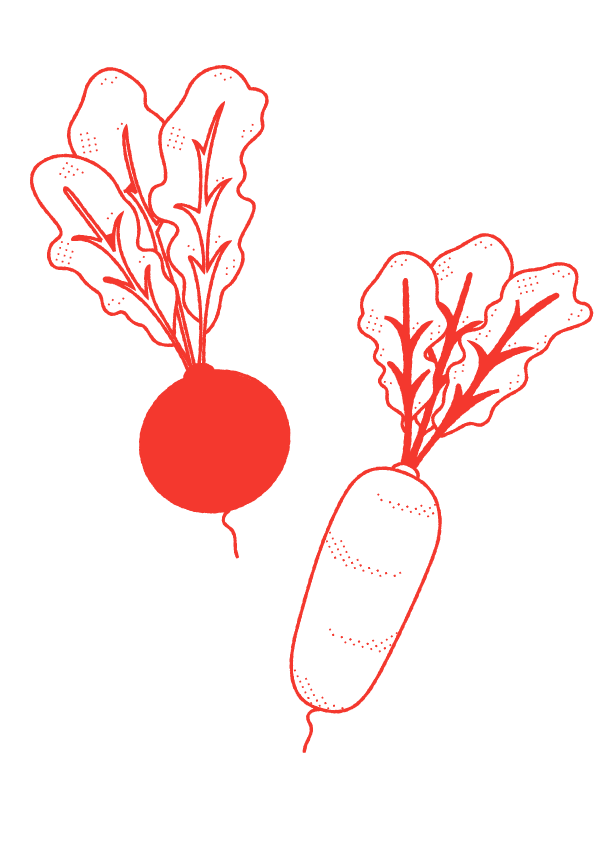Broccoli, Purple Sprouting
Broccoli is a staple vegetable in most British households but the purple sprouting broccoli does not appear on our plates as often as its greener counterpart. The name is somewhat misleading as the colour fades to a dark green after cooking. Even as it is flowering, only the heads are a dark violet shade while the stalks are a leafy green.
The overall look of purple sprouting broccoli is also not as tidy as the more common green broccoli. This cruciferous plant has smaller flowering heads and more leaves, similar to broccolini. However, this should not discourage you as it is an incredibly versatile and simple to prepare vegetable packed with lots of important nutrients such as vitamin C and the disease-fighting phytochemical sulphoraphane.
History
Purple sprouting broccoli is an ancient vegetable with evidence of its use as far back as the Roman ages. It is though to have its origins in Southern Italy. It is also famously featured in one of the oldest cookbooks, Apicius by Marcus Gavius Apicius, whom lived during the first century AD.
The spread of purple sprouting vegetable was slow and did not find its way to the British Isles until the 18th century. Even well into the 20th century, its production was mainly confined to Italy, France and the United Kingdom.
Interest grew in this plant belonging to the Brassicaceae family from 1985 onwards when two English breeders, Alan Gray and P. Crisp, began its commercialisation. Thanks to them, farmers and the public are more aware of this resistant Brassica.
Season & Cultivation
Purple sprouting broccoli is available year round but the best local harvesting seasons are during the first spring months of February to April. It has proven to be very resilient in cold temperatures and can survive harsh winters with temperatures as low as -12°C. In fact, the growth period in the cold is what gives it better flavour.
The second harvesting season is during summer to early autumn from June to October. However, these yields come from newer varieties that are less flavourful as the spring harvest. These summertime harvests are also more prone to bolt due to the warm temperatures.
One of the reasons why purple sprouting broccoli is less popular among farmers is because of its long growing season. The batch that comes on the market during the early spring months was most likely planted during the spring of the year before.
On the other hand, it also has a long harvesting season. When sowing the seeds in April – June the crop can be harvested for 5 months from January to May.
Buying Advice
As mentioned, purple sprouting broccoli does well in cold temperatures so there is no need for them to grow in greenhouses. They can survive the British winter. Yet, there are producers that still prefer growing them in greenhouses so be sure to avoid these.
You will find the best quality purple sprouting broccoli during the spring harvest season from February to April. These crops are generally grown from the traditional seed, not the newer modified variety. Plus, the spring harvest quality is better because it is less likely to have spotting.
When shopping, look for a darker coloured bunch with a stiff stalk. This means that it is still young and fresh. Do not worry about finding a lot of leaves on the stalk, either. These are perfectly edible so there is no reason to discard them.
This vegetable stays fresh in the fridge for several weeks when kept in an airtight bag. When the florets start to yellow or the leaves and stalk become limp it means that it is no longer fresh. When you notice this transformation it is a good idea to use the purple sprouting broccoli in soups to minimise food waste.
Cooking Advice
Purple sprouting broccoli is an incredibly versatile cruciferous vegetable with even more preparation methods than the more common green broccoli. The stalks and florets are more tender than its more common sibling which means that its preparation time is also shorter.
When preparing this Brassica, cut thicker stalks into thinner slices so that it cooks at the same rate as the florets. The leaves are edible so they can be left on the stalk during cooking.
This is a great option for a roasted vegetable platter since it requires less time at high heat to be fully cooked. This shorter cooking time also means that it retains its crispy nature better.
A pro tip for preparing purple sprouting broccoli is steaming it instead of boiling it. Again, it has a shorter cooking time and boiling this vegetable would take away its delicious crunch, too fast.
As for pairings, the fresh crisp flavour profile goes incredibly well with creamy and oily elements such as margarine, olive oil or creamy sauces such as a cashew white sauce. This makes it a perfect filler for pastas, salads and roast dishes.



